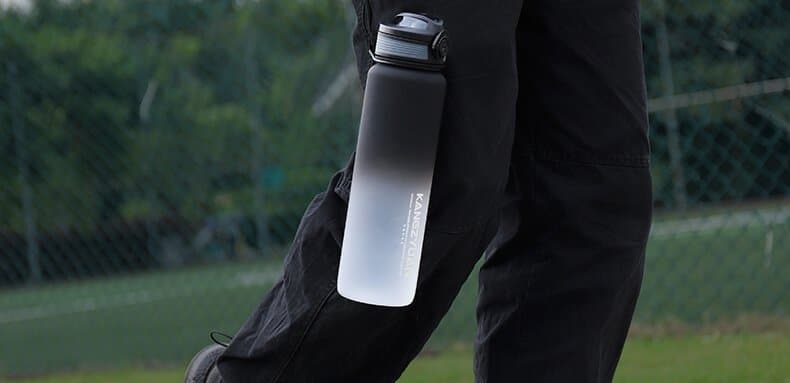How to Clean Stainless Steel Water Bottles? Step by Step Guide
This article will introduce some common methods of cleaning stainless steel water bottles in detail to help you use stainless steel water bottles better.
Last Updated on March 11, 2024 by Tina ShaoThere are a few ways to clean your stainless steel water bottle.
We’re not saying you need to be an expert in cleaning water bottles. It’s probably more accessible, rather than harder, for the average home cook to clean a zillion metal water bottles than it is to cook a gourmet meal.
But if you want to feel more confident about cleaning stainless steel drink containers, here are a few tried-and-tested tricks!
Step 1: Start with warm water and dish soap
Please use dish soap with biodegradable surfactants (e.g., Dawn) to dissolve those hard-to-remove grime splatters on stainless steel.
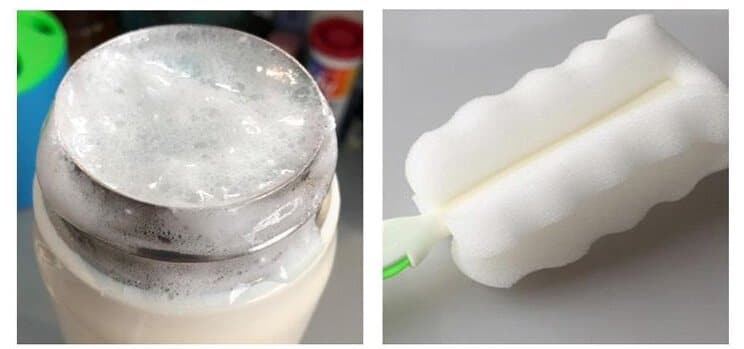
Dish soap is the most common cleaner when cleaning stainless steel bottles. Its neutral pH balance is not as harsh as bleach and won’t stain your water bottle as some other cleaners might. If you want something that gets the grime off without being too abrasive on your regular plastic brush, then this is definitely what you need.
Step 2: Add vinegar and lemon juice
This will soften any tough stains (like stubborn tea stains) without damaging the finish of your container. Pour 1/4 cup of white vinegar into a bowl or bottle and add two tablespoons of lemon juice; mix them well and pour into the dirty container.
Put on rubber gloves and wash as instructed by the manufacturer before rinsing thoroughly with cold water; allow to dry completely before using again!
Step 3: Bleach
When you think about bleaching something, it usually brings up images of bright yellow stains on white clothing, but diluted bleach can be used safely with stainless steel bottles (and all plastics).
The best ratio would be one part bleach mixed with two parts water to effectively cleanse your container without damaging its surface or causing health issues!
In addition, be sure that there are no holes left in which bacteria could grow after use. Once again, this can lead to illness if consumed, so ensure those holes are correctly covered before being placed back into circulation.
And remember, never leave anything soaking overnight because it will eventually start smelling bad due to bacteria growing inside, which could lead to health problems from ingesting contaminated liquids!
Step 4: Put baking soda and hydrogen peroxide in the bottle
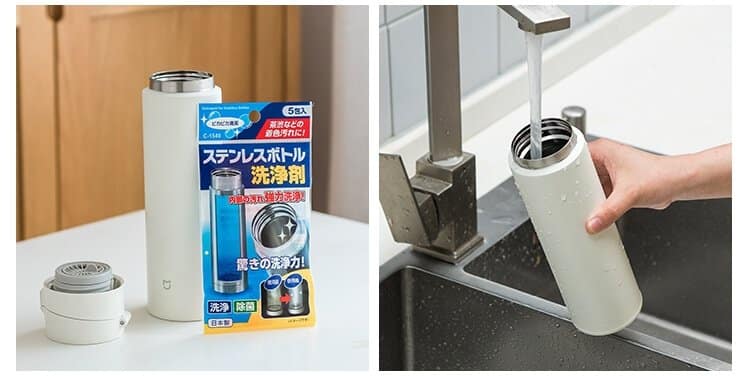
Baking soda and hydrogen peroxide can effectively clean a stainless steel water bottle. “This is an excellent combination because they will react together,” says Henry Cowan, a cleaning expert at Fantastic Services, working in the industry for 13 years.
Step 5: Put baking soda and water in the bottle
You can also use baking soda and water to clean your stainless steel bottle. Put warm or hot water in the bottle with a tablespoon of baking soda. Then, let it sit overnight before washing it with dish soap or a sponge in the morning to remove any residue inside the bottle.
Step 6: Use vinegar and baking soda instead of hydrogen peroxide for extra stubborn stains.
Add one tablespoon of vinegar instead of hydrogen peroxide if you have any stubborn stains on your stainless steel bottles. Let this solution sit in the water bottles for about 15 minutes before scrubbing them clean with dish soap or a sponge.
How do you clean stainless steel water bottles with baking soda?
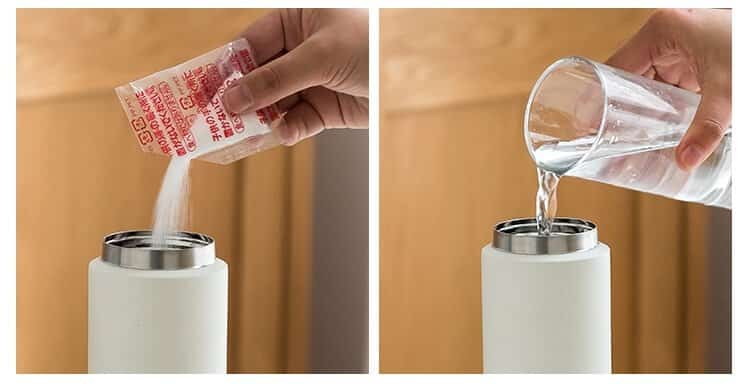
- 1 tbsp. baking soda
- A few drops of dish soap
- Warm water
- Scrub brush or cloth and some elbow grease
Steps:
1. Add 1 tbsp. Of baking soda to your stainless steel water bottle, then a few drops of dish soap. Fill the rest with warm water and put the lid on tightly.
Shake it up vigorously! You want that powdery substance to move all over the inside surface so it can combat any stains or unwanted smells.
Let it sit for a minute or two if you have time, then give it another shake to ensure everything is well-distributed. Pour out any leftover residue and set it aside for now; you’ll clean it up later.
2. Use a scrubbing brush (assuming your bottle has a wide mouth) or scrub with a cloth dipped in warm water until all surfaces are clean of grime and gunk! Rinse well with fresh, warm water afterward—try not to let any go down the drain when you pour out those last bits from cleaning, so there’s no chance they’ll clog up anything on their way out!
How to clean a stainless steel water bottle with bleach?
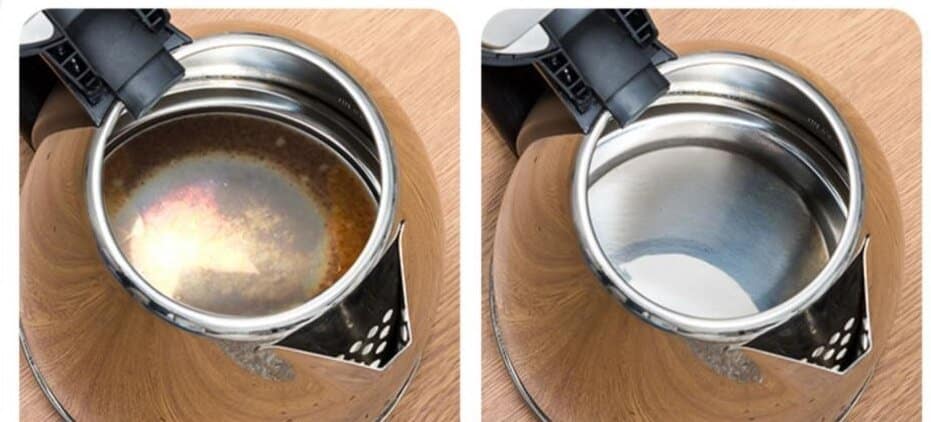
- Use bleach to remove mold and mildew from stainless steel water bottles.
- Mix 1 part bleach with nine parts water. For example, mix 1 cup of bleach with 9 cups of water (or 1/4 cup of bleach with two ¼ cups).
- Let the water bottle soak in the bleached water for 20 minutes.
- Rinse the water bottle thoroughly with water several times to remove all traces of bleach and dry completely between each rinse.
- Repeat if necessary or until the mold or mildew is removed from the stainless steel bottle.
How to clean a water bottle with vinegar?
A stainless steel water bottle with vinegar is a natural disinfectant that eliminates odors and residue.
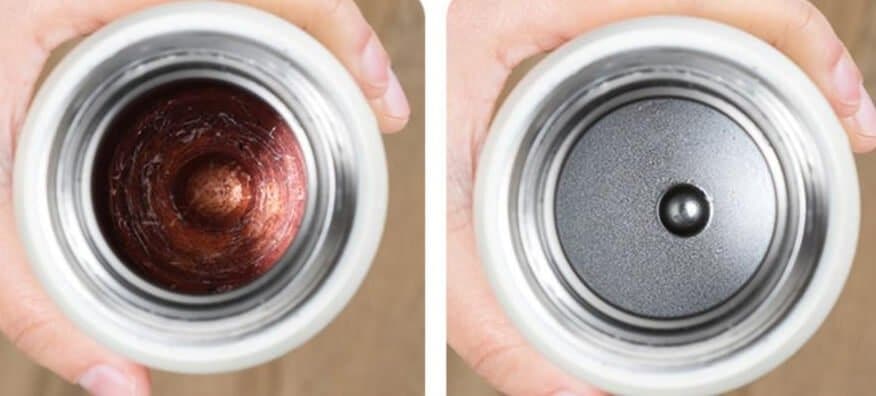
Here’s how to clean your water bottle with vinegar:
- Clean the cap in warm, soapy water. You can use a brush or sponge to scrub away any dirt or residue built upon it over time.
- Fill the bottle one-fourth with vinegar, then add lukewarm water until it’s almost complete.
- Take off the lid and shake vigorously (with the top off). Let sit for 15 minutes.
- Shake again, pour out all remaining liquid, then rinse thoroughly with hot water until no traces of vinegar are left in your bottle.
How to clean a water bottle without a brush?
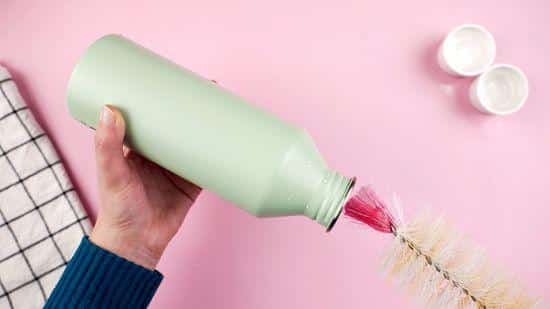
There are plenty of ways to clean a steel water bottle without a brush, but I’m going to share two of my favorites with you:
- Lemon juice. This acid is known for its cleansing qualities and is too strong for most bacteria to survive. You need half a lemon squeezed into the bottle and then filled with water. Let it soak overnight, give it another good scrub in the morning with some dish soap, and rinse well. You’ve got yourself a sparkling clean bottle!
- Dish soap. Dish soap works fine if you don’t have lemons on hand or don’t feel like squeezing them into your water bottle (we all get lazy sometimes). Just fill up your bottle halfway with warm tap water, as usual, squirt in some dishwashing detergent until the suds reach about an inch from the top, screw on the lid (tightly!), and shake vigorously for thirty seconds. Pour the soapy solution and thoroughly rinse your container before using it again.
How to remove rust from stainless steel water bottles?
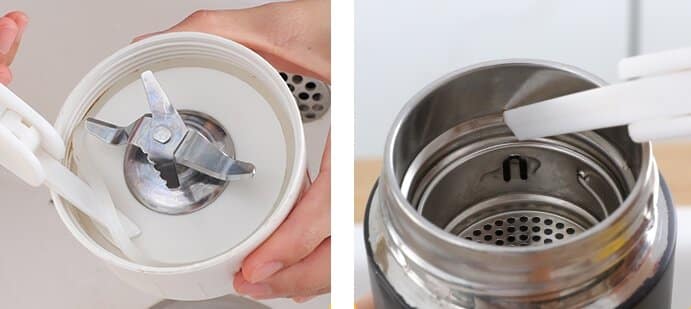
You can remove rust from stainless steel water bottles with the following steps:
- Add lemon juice. Fill your water bottle and add a few drops of lemon juice. It’s that simple!
- Shake the bottle. Hold the water bottle tightly, close the lid, and shake it for a few minutes. You’ll see rust particles forming in the bottom of your bottle, which is exactly what you want to happen.
- Rinse the bottle well after shaking. Ensure you’ve removed all traces of rust from your stainless steel water bottle by rinsing it thoroughly with warm, soapy water or running it through a cycle in your dishwasher (if it’s dishwasher safe).
- Repeat if necessary until you’re pleased with the results!
How to remove mold from stainless steel water bottles?
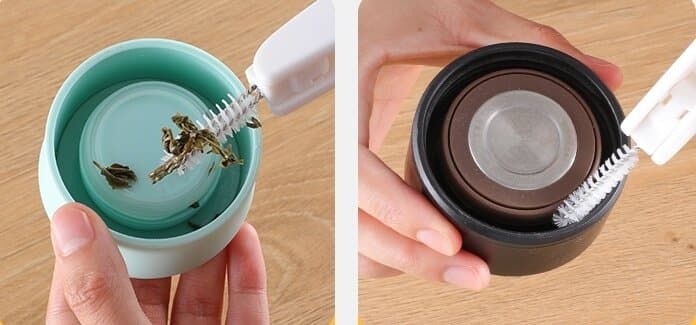
You can clean a stainless steel water bottle with mold in it by following these simple steps:
- Spray the inside of the bottle with vinegar.
- Add one teaspoon of baking soda and fill the rest of the bottle with hot water. Shake vigorously until all inside parts are covered in foamy bubbles (i.e., no visible dry powder remains). Let sit for a few minutes until you see that most of the foam has gone down and become a gel-like consistency.
- Rinse out the inside of your bottle thoroughly with hot water while scrubbing it gently but firmly with a bottle brush to ensure you get rid of any leftover moldy residue from crevices and corners.
- Rinse your bottle again so there’s no trace of vinegar or baking soda left over, which could contribute to an unpleasant metallic taste if you drink from your cleaned bottle without rinsing first! Then leave it out to dry completely before using again.”
How do you keep a stainless steel water bottle from smelling?
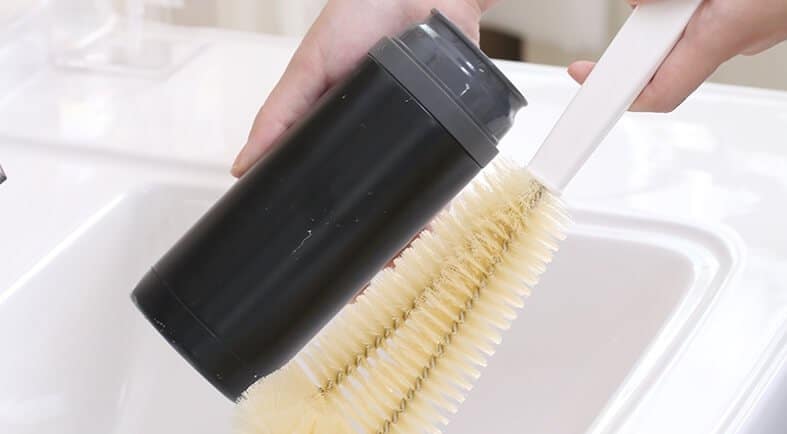
A stainless steel water bottle is a safe and healthy option for people who want to reduce their plastic consumption. However, it can sometimes develop an unpleasant odor if not cleaned properly. The best way to keep your bottle from smelling is by washing it regularly with soap and warm water.
To keep a stainless steel water bottle from smelling, you should:
- Wash it regularly with soap and warm water. You can use a cleaning solution to give the inside of your bottle a deeper clean.
- Dry it off completely after washing. If there’s still moisture in your bottle after washing, bacteria can grow in that spot, contributing to an unpleasant odor. Drying agents like baking soda or charcoal will help absorb any leftover moisture and neutralize odors from previous uses.
- Use a cleaning brush, tablet, or cloth on hard-to-reach parts of your bottle, like its lid or spout, where dirt gets trapped.
There are other tips to give your bottle an even deeper clean. You can use a cleaning solution like vinegar or baking soda to help break up dirt and grime inside the bottle. Vinegar is also good at removing odors from previous uses because it neutralizes them with its acidic properties.
How often should you clean stainless steel water bottles?
How often you clean your water bottle depends on how frequently you use it. If you use your water bottle several times a day for various activities, we recommend cleaning it at least once daily to prevent odors and bacteria from building up.
However, cleaning it every few days should be sufficient if you only use your water bottle occasionally or for the same purpose (e.g., drinking at work).



